Wildlife Calendar

Sloth Bear May – September
 The Sloth bear is generally a nocturnal mammal with occaisional day time sightings possible in well visited national parks such as yala. In late May, the Palu tree begins to bear fruit. The Palu (iron wood) is a beautiful tall tree with a bark textured with reticulations. The Bears take temporary absence of leave from thier role as a semi- specialist in termites. With berries a plenty, they go on a feeding spree with some reportedly showing signs of inerbation from gorging themselves on the palu fruit.
The Sloth bear is generally a nocturnal mammal with occaisional day time sightings possible in well visited national parks such as yala. In late May, the Palu tree begins to bear fruit. The Palu (iron wood) is a beautiful tall tree with a bark textured with reticulations. The Bears take temporary absence of leave from thier role as a semi- specialist in termites. With berries a plenty, they go on a feeding spree with some reportedly showing signs of inerbation from gorging themselves on the palu fruit.
Leopard May – September
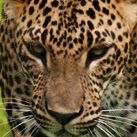 The grass is down and leopard sightings are up. Leopards are seen regularly throughout the year. But the die-back of the ground cover with the onset of the dry season provides better viewing opportunities
The grass is down and leopard sightings are up. Leopards are seen regularly throughout the year. But the die-back of the ground cover with the onset of the dry season provides better viewing opportunities
for finding them and photographing them. Yala National Park, offers the best chance in Asia for seeing Leopard. This is due to a number of factors. The leopards have an average density of one per square kilometer, the terrain is fairly open with grasslands and it does not face threat from larger terrestrial predators. Wilpattu National Park in North-west Sri Lanka is another top location for Leopard especially during this dry period.”
Asian Elephant July – September
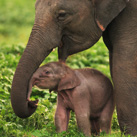 ‘The Gathering’ (Ranked among the world’s top wildlife spectacles) peaks heading towards September and elephants, sometimes numbering over an awe inspiring three hundred, converge onto the receding shores of Minneriya Tank. Nowhere else in the world will one find such a high concentration of wild Asian Elephants within a few square kilometers. ‘The Gathering’ is a wonderful opportunity for wildlife enthusiasts and casual travellers to observe the social dynamics of elephants. Asian Elephant are seen throughout the year at almost all dry-zone national parks including Uda Walawe, Yala and Wasgamuwa.
‘The Gathering’ (Ranked among the world’s top wildlife spectacles) peaks heading towards September and elephants, sometimes numbering over an awe inspiring three hundred, converge onto the receding shores of Minneriya Tank. Nowhere else in the world will one find such a high concentration of wild Asian Elephants within a few square kilometers. ‘The Gathering’ is a wonderful opportunity for wildlife enthusiasts and casual travellers to observe the social dynamics of elephants. Asian Elephant are seen throughout the year at almost all dry-zone national parks including Uda Walawe, Yala and Wasgamuwa.
Sperm Whale July – September
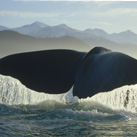 Sri Lanka is amongst the top ten places in the world for seeing Sperm Whales. Sightings of Sperm Whales along with Blue Whales peak in December and again in April during their migration from the Arabian Sea to the Bay of Bengal. The deep seas off the Kalpitiya Peninsula in the North-west where the continental shelf runs in parrallel to the land, provide an ideal habitat for these giant oceanic predators, which need to dive several hundred meters to hunt prey such as the Giant Squid. Sperm Whales may also be seen off Mirissa in the South from December to April and off Trincomalee in the East from February to April.
Sri Lanka is amongst the top ten places in the world for seeing Sperm Whales. Sightings of Sperm Whales along with Blue Whales peak in December and again in April during their migration from the Arabian Sea to the Bay of Bengal. The deep seas off the Kalpitiya Peninsula in the North-west where the continental shelf runs in parrallel to the land, provide an ideal habitat for these giant oceanic predators, which need to dive several hundred meters to hunt prey such as the Giant Squid. Sperm Whales may also be seen off Mirissa in the South from December to April and off Trincomalee in the East from February to April.
Butterflies and Dragonflies January – December
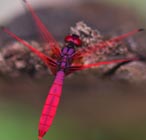
Around February the North East monsoon begins to subside. By mid February the mud puddles on the jeep tracks in the north central province are already swarming with newly emerged butterflies which can feed on the luxuriant folliage which has been fed by the monsoon rains. Clouds of ‘whites’ and ‘yellows’ gather. Clear days and freezing nights are experienced in the highlands. A good time of year to visit Horton Plains National Park for spectacular views from world’s end and to see montane endemics such as the Black- lipped Lizard and Rhino Horned Lizard. Dragonflies however can be seen right throught the year.
Primates June – September
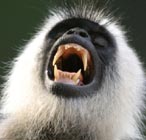 The North central plains are cooler and it is a good time to observe hanuman langurs, the endemic Toque Monkeys and the endemic Purple Faced Leaf Monkeys around the archeological sites of polunaruwa and sigiriya.
The North central plains are cooler and it is a good time to observe hanuman langurs, the endemic Toque Monkeys and the endemic Purple Faced Leaf Monkeys around the archeological sites of polunaruwa and sigiriya.
Birding March – April, November – February
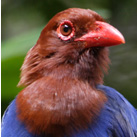 Nearly 450 species of birds have been recorded in Sri Lanka including migrants. Endemics and resident avian species can be observed throughout the year. No less than 33 species of
Nearly 450 species of birds have been recorded in Sri Lanka including migrants. Endemics and resident avian species can be observed throughout the year. No less than 33 species of
birds are endemic, found nowhere else in the world.
March – April The south-west zone where the bio-diversity rich rainforests are relatively free from rain. A window of opportunity for extended rainforest safaris before the start of the south-west monsoon. The mixed species feeding flocks of birds in Sinharaja are special. One of the longest running field studies of mixed species flocks have shown them to be the largest in the world. It is not unusual to encounter flocks with over twenty
species of birds. On many occasions over half a dozen endemic birds can be seen in a flock. Small mammals such as the Dusky Squirrel, Layard’s Squirrel and Giant Squirrel also join these feeding flocks.
November – February: The winter migrants have arrived in force. Every bush in Yala seems to have a Brown Shrike perched atop it. Every shaded copse seems to have an Indian Pitta screeching from it at six o’ clock. Migrant waders are stopping over in the freshly ploughed paddy fields of Talangama en route down south to the rich wader habitats of reserves such as Kalametiya, Bundala and Palatupana. The coastal flats teem with tens of thousands of Curlew Sandpipers, Lesser Sand Plovers, Little Stints, Black-winged Stilts, Common and Wood Sandpipers, etc.
Blue Whale July – September
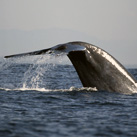 Mirissa in the South and Trincomalee in the East of Sri Lanka are the world’s top two locations for watching the largest ever creature to have inhabited our planet, the Blue Whale. The number of Blues peak in December and again in April during their annual migration as they travel between feeding areas in the Bay of Bengal and up welling off Somalia in Africa. There is also a sufficient resident population of Blue Whales to provide an extended viewing season up to about August. Between November and April (until the South-west monsoon arrives), Blue Whales can be observed off Mirissa with a strike rate of over 90%. The North-east monsoon begins to ease from around February and Blue Whales can be seen off Trincomalee till late August.
Mirissa in the South and Trincomalee in the East of Sri Lanka are the world’s top two locations for watching the largest ever creature to have inhabited our planet, the Blue Whale. The number of Blues peak in December and again in April during their annual migration as they travel between feeding areas in the Bay of Bengal and up welling off Somalia in Africa. There is also a sufficient resident population of Blue Whales to provide an extended viewing season up to about August. Between November and April (until the South-west monsoon arrives), Blue Whales can be observed off Mirissa with a strike rate of over 90%. The North-east monsoon begins to ease from around February and Blue Whales can be seen off Trincomalee till late August.









